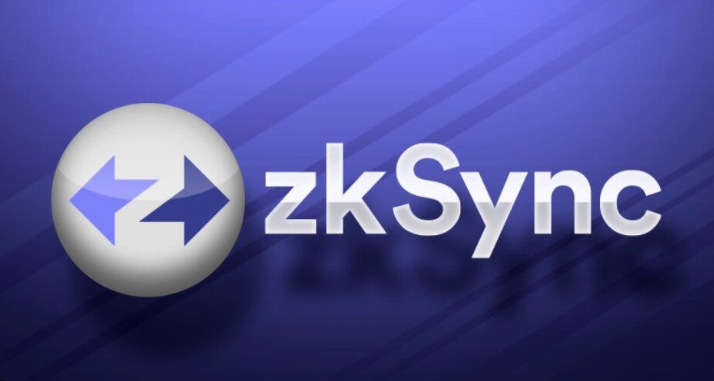The ZKsync Era represents a significant advancement in the realm of blockchain technology, focusing on scalability and efficiency. This article provides a comprehensive overview of the ZKsync Era, its underlying technology, benefits, comparisons with other solutions, and its potential impact on the blockchain industry.
What is ZKsync?
Introduction to ZKsync
ZKsync is a Layer 2 scaling solution for Ethereum, designed to enhance the network’s transaction throughput while maintaining its security and decentralization. It utilizes zero-knowledge rollups (ZK-rollups), a technology that bundles multiple transactions into a single proof, significantly reducing the data load on the Ethereum mainnet.
The Need for ZKsync
As Ethereum’s popularity has grown, so has the congestion on its network. High gas fees and slower transaction times have become significant issues, hindering the user experience and limiting scalability. ZKsync aims to address these challenges by providing a more efficient and cost-effective solution.
How Does ZKsync Work?
Zero-Knowledge Rollups (ZK-rollups)
ZK-rollups are a type of Layer 2 scaling solution that allows for off-chain transaction processing while ensuring the security of on-chain data. In a ZK-rollup, transactions are executed off-chain and then bundled into a single proof, which is submitted to the Ethereum mainnet. This proof, generated using zero-knowledge cryptography, verifies the correctness of the off-chain transactions without revealing any sensitive information.
The ZKsync Architecture
ZKsync’s architecture is built to maximize efficiency and scalability. Key components include:
- Validators: Entities responsible for processing transactions off-chain and generating cryptographic proofs.
- Rollup Contracts: Smart contracts on the Ethereum mainnet that validate and record the proofs submitted by validators.
- User Accounts: Accounts that hold assets on both Layer 1 (Ethereum) and Layer 2 (ZKsync), enabling seamless transfers between the two layers.
Transaction Flow in ZKsync
- Transaction Submission: Users submit transactions to ZKsync, which are processed off-chain by validators.
- Proof Generation: Validators aggregate multiple transactions into a single proof using zero-knowledge cryptography.
- Proof Submission: The proof is submitted to the Ethereum mainnet, where it is verified by the rollup contract.
- State Update: Once the proof is verified, the state of the Ethereum network is updated to reflect the processed transactions.
Benefits of ZKsync
Scalability
ZKsync significantly enhances the scalability of Ethereum by processing thousands of transactions off-chain and bundling them into a single proof. This reduces the load on the mainnet and allows for much higher transaction throughput.
Lower Gas Fees
By minimizing the amount of data that needs to be recorded on the Ethereum blockchain, ZKsync drastically reduces gas fees. This makes transactions more affordable for users and encourages greater adoption of decentralized applications (dApps).
Security
ZKsync leverages the security of the Ethereum mainnet through its use of zero-knowledge proofs. These cryptographic proofs ensure that off-chain transactions are valid and tamper-proof, maintaining the integrity of the network.
Speed
Transactions processed on ZKsync are significantly faster than those on the Ethereum mainnet. This improved speed enhances the user experience, making ZKsync an attractive option for dApps that require high throughput and low latency.
ZKsync vs. Other Layer 2 Solutions
Starknet and Arbitrum
Starknet and Arbitrum are two other prominent Layer 2 solutions for Ethereum. While all three aim to improve scalability and reduce transaction costs, they employ different technologies and approaches.
Starknet
Starknet, like ZKsync, uses ZK-rollups to achieve scalability. However, it utilizes STARK (Scalable Transparent Argument of Knowledge) proofs, which are a different form of zero-knowledge proof. Starknet’s approach focuses on maximizing scalability and security while maintaining transparency.
Arbitrum
Arbitrum, on the other hand, uses Optimistic Rollups, a different type of Layer 2 scaling solution. Optimistic Rollups assume that transactions are valid by default and only verify them if there is a dispute. This approach can offer higher scalability but may introduce some latency due to the dispute resolution process.
Comparative Analysis
- Scalability: Both ZKsync and Starknet offer high scalability through ZK-rollups, while Arbitrum provides scalability through Optimistic Rollups.
- Security: ZKsync and Starknet leverage zero-knowledge proofs for enhanced security, whereas Arbitrum relies on fraud proofs for dispute resolution.
- Cost: All three solutions aim to reduce transaction costs, but ZKsync’s approach of minimizing on-chain data may offer lower fees in practice.
- Speed: ZKsync and Starknet can offer faster transaction finality compared to Arbitrum, which may experience delays due to the dispute resolution process.
The Future of ZKsync
Adoption and Integration
As the blockchain ecosystem continues to grow, the demand for scalable and efficient solutions like ZKsync will increase. Many dApps and decentralized finance (DeFi) platforms are already exploring or integrating ZKsync to enhance their performance and user experience.
Ecosystem Development
The development of the ZKsync ecosystem is crucial for its long-term success. This includes creating developer tools, fostering partnerships, and encouraging community involvement. A robust ecosystem will attract more developers and projects, driving further adoption and innovation.
Technological Advancements
Continuous improvements in zero-knowledge cryptography and Layer 2 solutions will enhance ZKsync’s capabilities. Innovations in zk-SNARKs and zk-STARKs, as well as optimizations in proof generation and verification, will further boost ZKsync’s efficiency and scalability.
Challenges and Considerations
User Experience
While ZKsync offers significant benefits, user experience remains a critical factor. Ensuring seamless integration with existing wallets, exchanges, and dApps is essential for widespread adoption. Simplifying the onboarding process and providing clear documentation will help users and developers transition to ZKsync.
Regulatory Compliance
As with all blockchain technologies, regulatory compliance is a crucial consideration. Ensuring that ZKsync adheres to relevant regulations and provides mechanisms for compliance will be vital for gaining trust and legitimacy in the broader financial ecosystem.
Competition
ZKsync faces competition from other Layer 2 solutions and scaling technologies. Staying ahead of the curve through continuous innovation and differentiation will be essential for maintaining its position in the market.
Conclusion
The ZKsync Era marks a transformative period in the evolution of blockchain technology. By leveraging zero-knowledge rollups, ZKsync addresses the scalability and cost challenges of the Ethereum network, offering a more efficient and secure solution. As the technology matures and adoption grows, ZKsync has the potential to play a pivotal role in the future of decentralized applications and finance.
FAQs
What is ZKsync?
ZKsync is a Layer 2 scaling solution for Ethereum that uses zero-knowledge rollups to enhance transaction throughput while maintaining security and reducing costs.
How does ZKsync improve scalability?
ZKsync processes transactions off-chain and bundles them into a single proof, which is submitted to the Ethereum mainnet. This reduces the data load on the mainnet and allows for higher transaction throughput.
What are the benefits of using ZKsync?
ZKsync offers several benefits, including improved scalability, lower gas fees, enhanced security through zero-knowledge proofs, and faster transaction speeds.
How does ZKsync compare to other Layer 2 solutions like Starknet and Arbitrum?
ZKsync and Starknet both use ZK-rollups for scalability, while Arbitrum uses Optimistic Rollups. Each solution has its own advantages in terms of scalability, security, cost, and speed.
What are the challenges facing ZKsync?
Challenges include ensuring a seamless user experience, maintaining regulatory compliance, and staying competitive through continuous innovation and ecosystem development.
What is the future potential of ZKsync?
The future potential of ZKsync lies in its ability to drive the adoption of scalable and efficient blockchain solutions, foster ecosystem development, and incorporate technological advancements to stay ahead in the competitive landscape.


